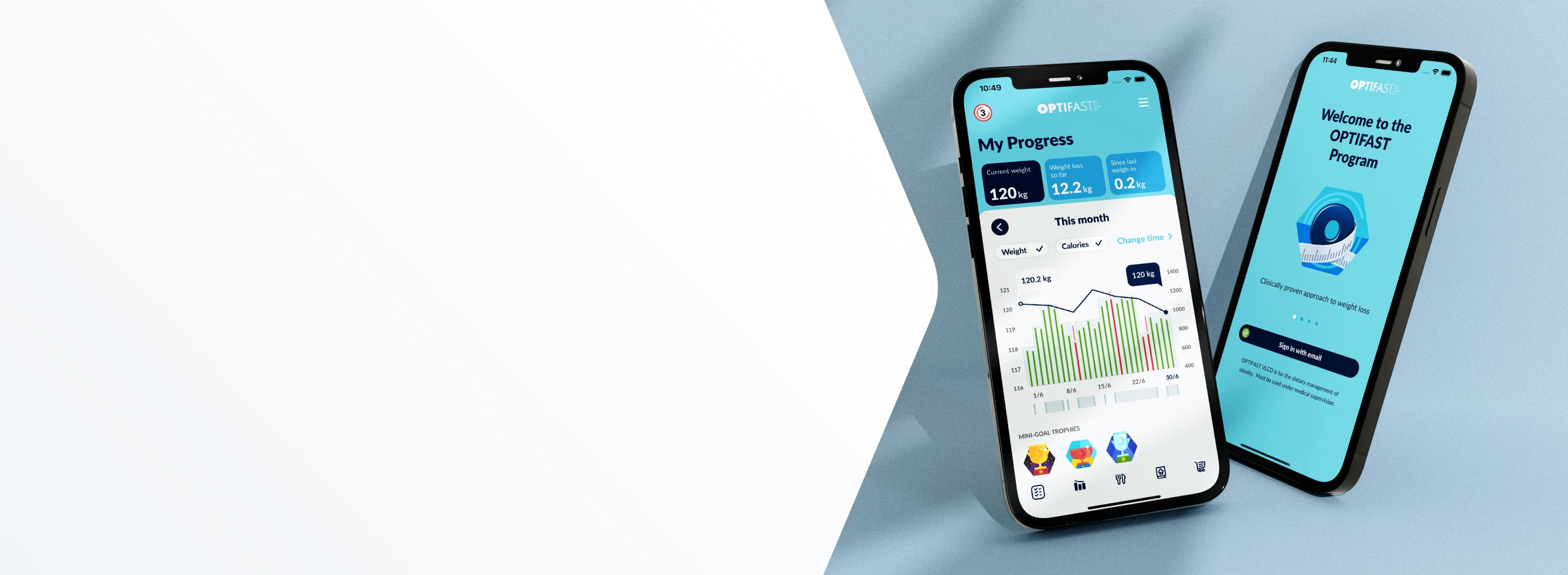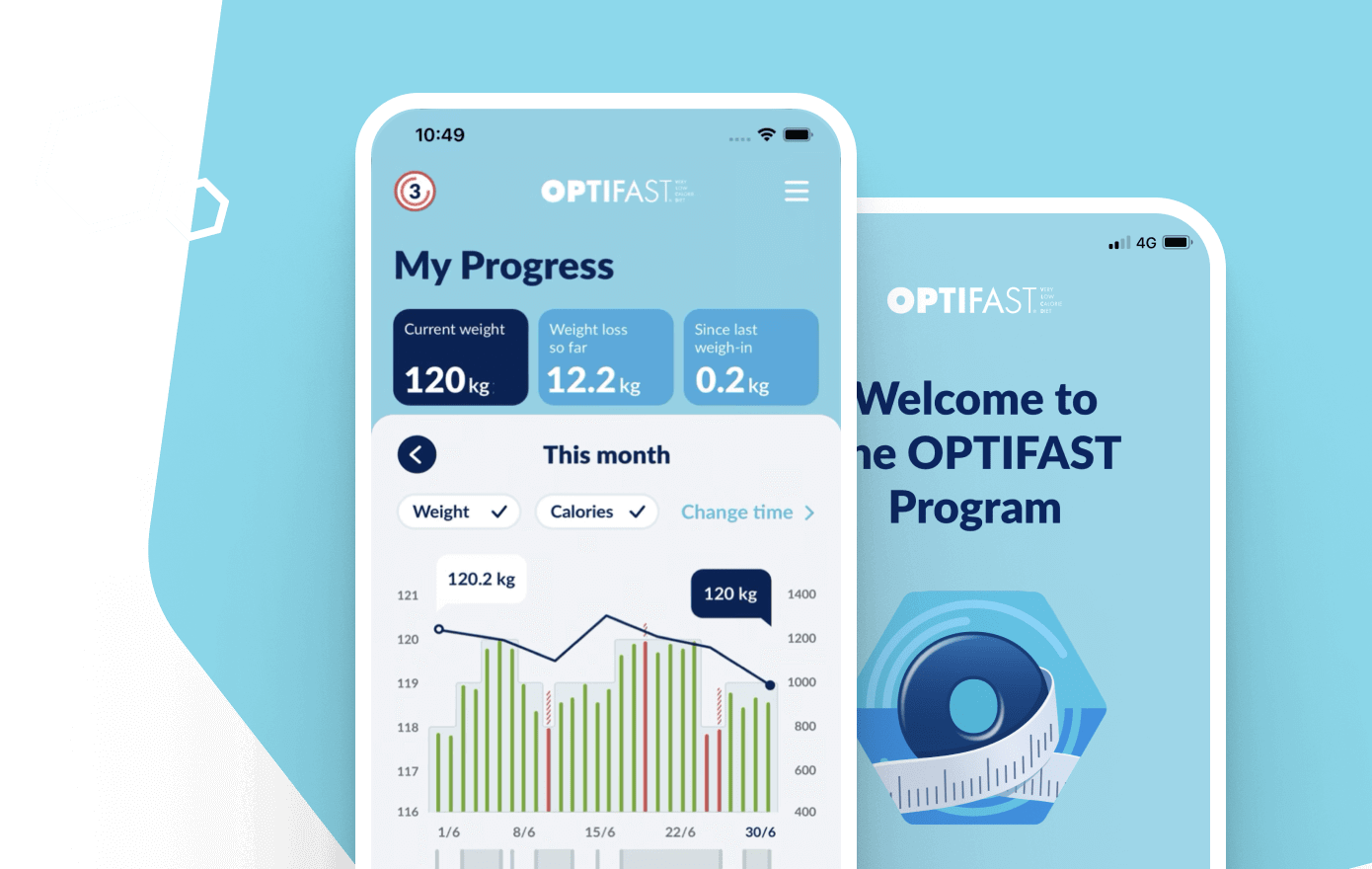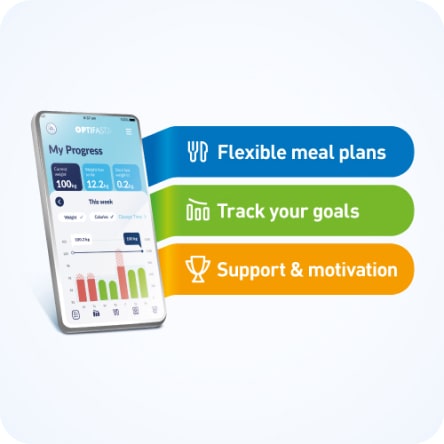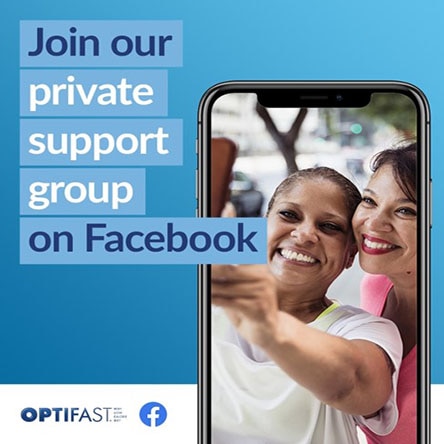Whether you want to follow the Program in a structured or flexible way, we guide you along your journey with personalised meal plans and recipes that suit your needs, no matter what Level you are on.
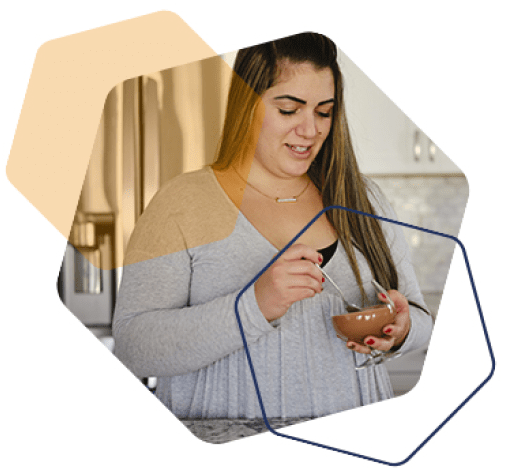
Track your calorie intake
Track your weight and steps

Celebrate each milestone achieved along the way
What makes our app unique?
We understand weight loss journeys can feel overwhelming at times, so our app helps you set mini-goals that break up your ultimate weight loss goal into smaller milestones to help ease the pressure and focus on just 1 week or 1 month ahead – you choose!
Flexible weight loss programs
You can choose to follow the OPTIFAST Program by choosing your own levels or following our level recommendations to achieve your ultimate weight loss goal.
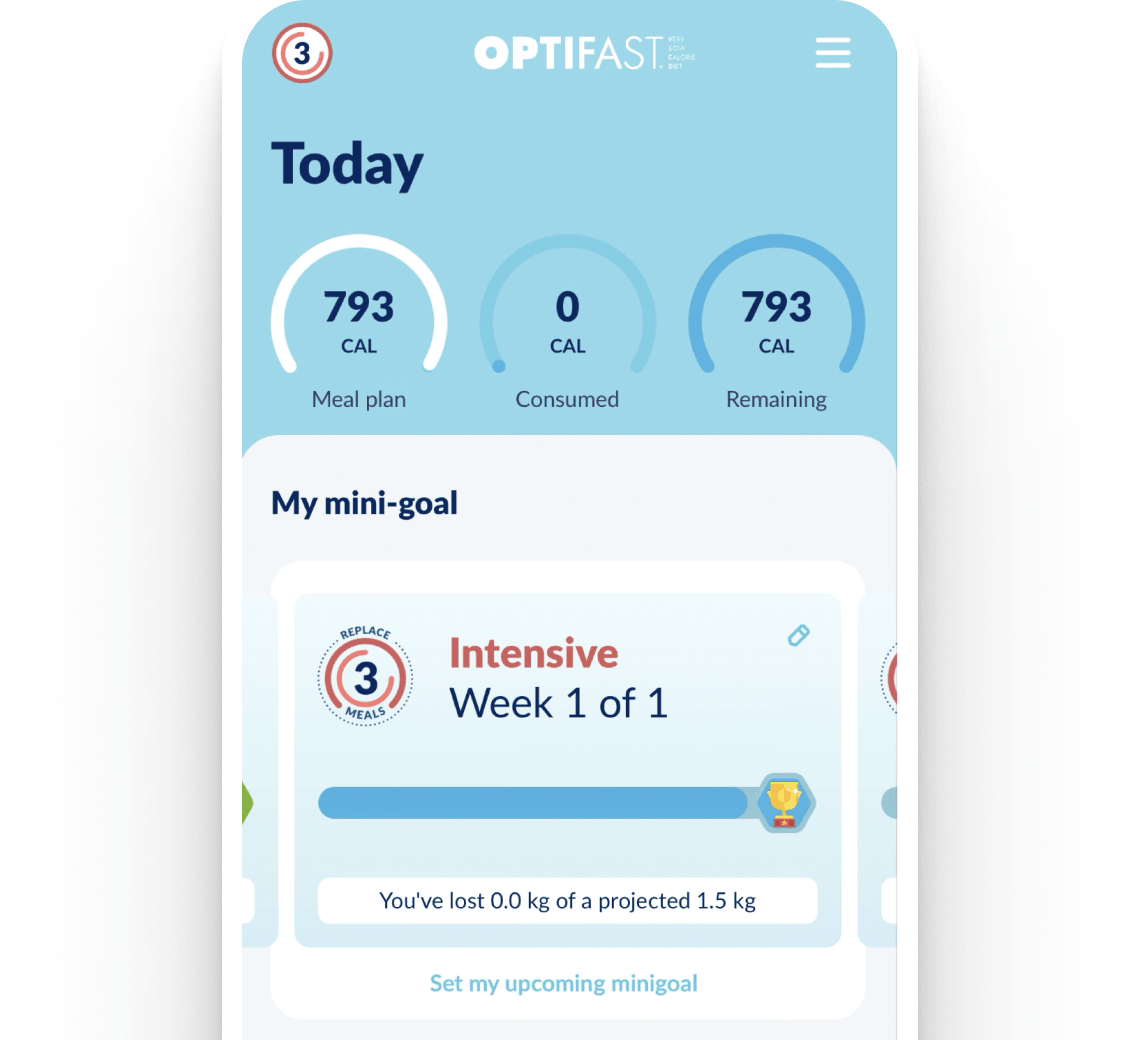
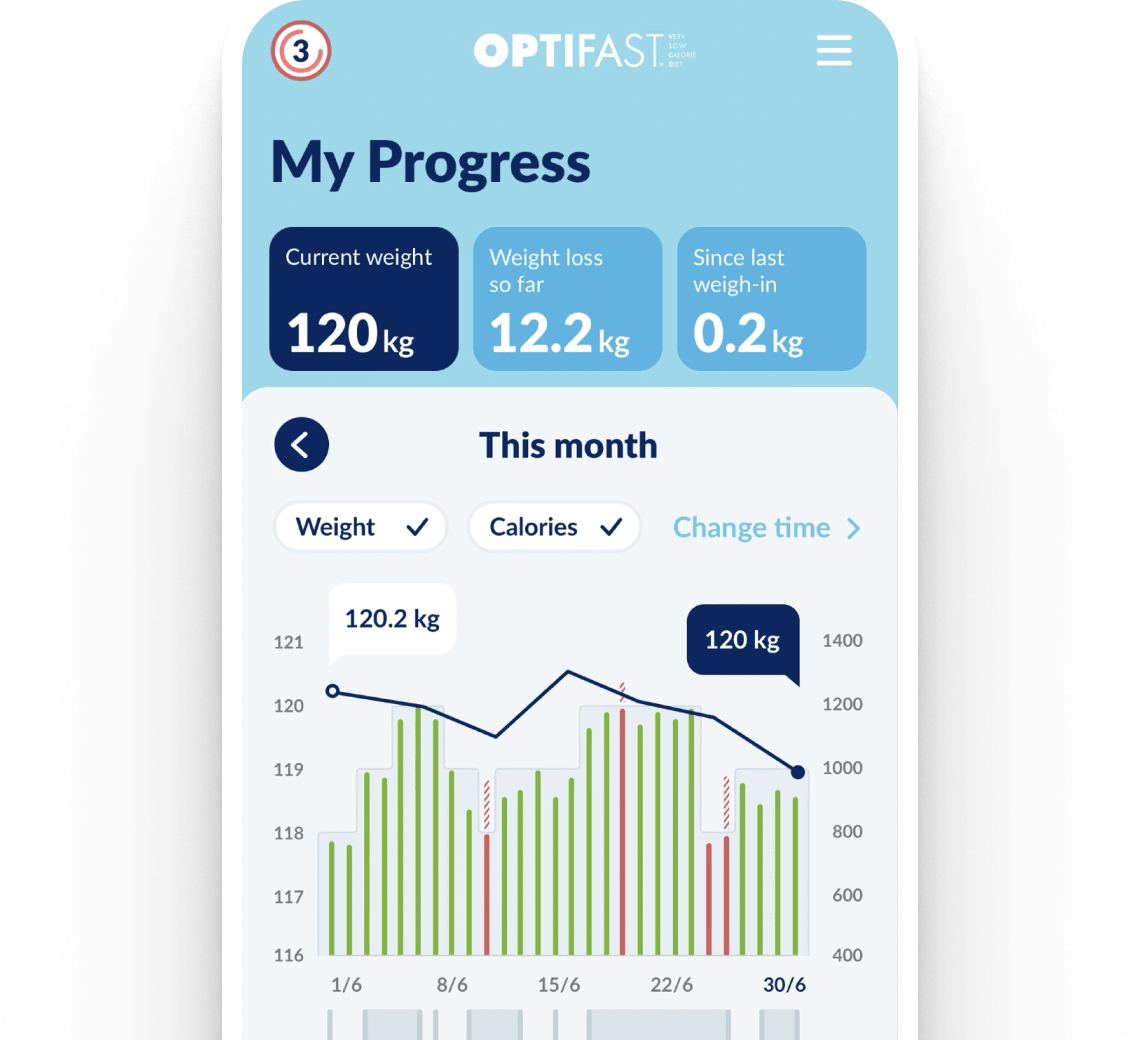
Track calories, weight loss and progress
Keep track of your progress towards your weight loss goal in My Progress.
Personalised meal plans
We take the guess work out of eating right, no matter what level you are on, with suggested meal plans in line with your Program Level.
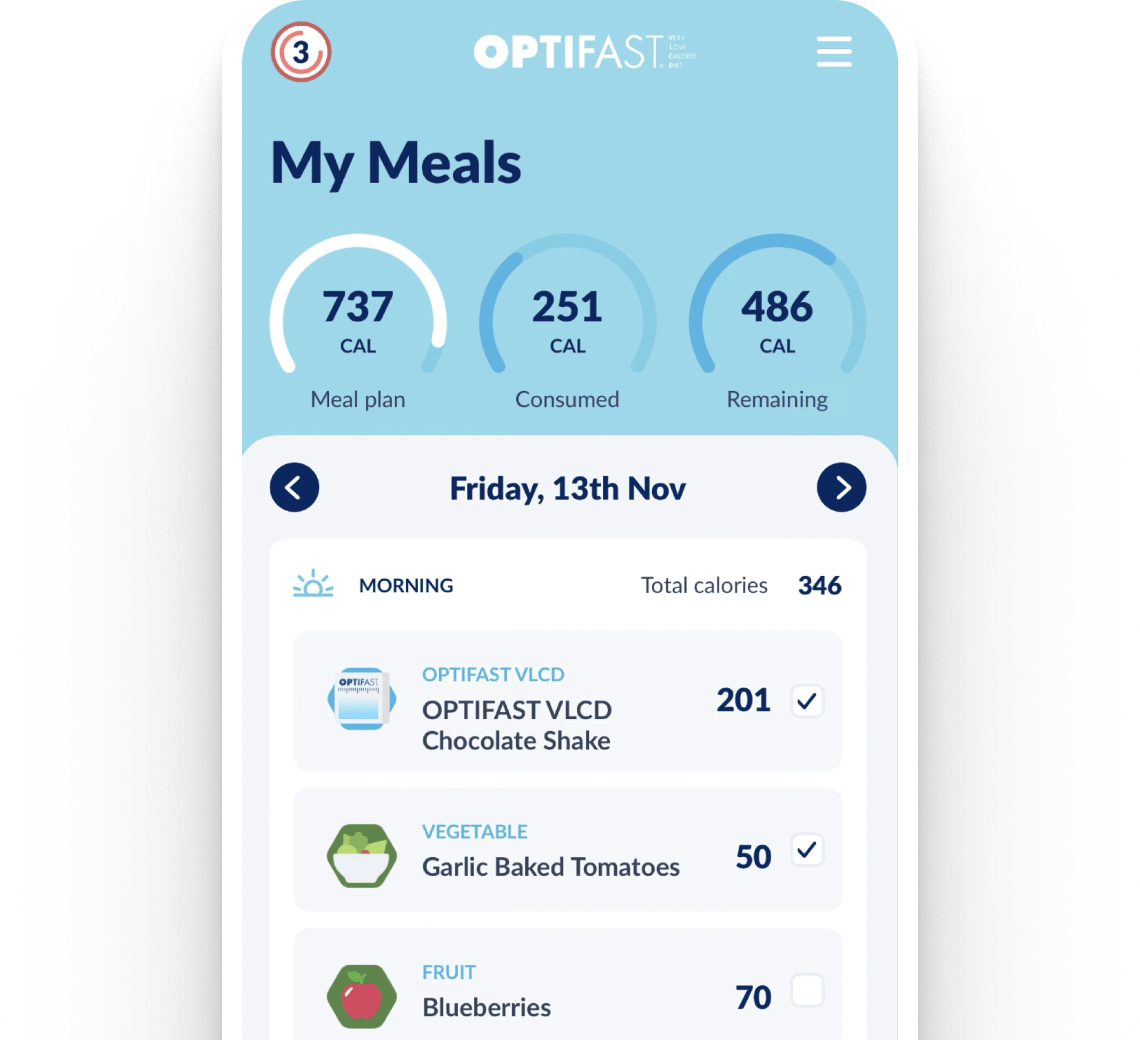
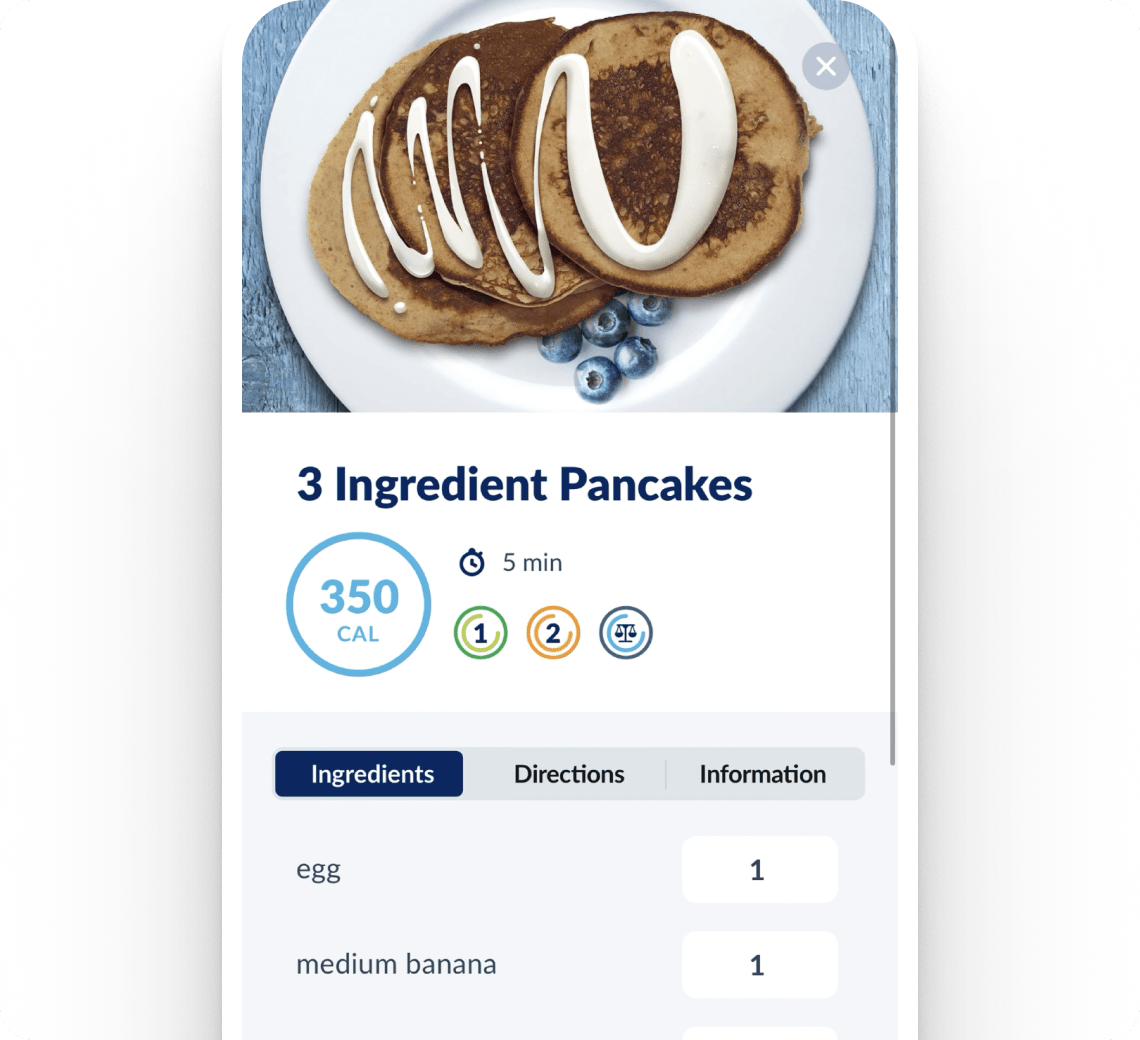
Tasty Recipes
Healthy, tasty and calorie controlled OPTIFAST dietitian approved recipes personalised to your dietary preferences. Easily view them in our weekly generated shopping list to help you plan ahead.
